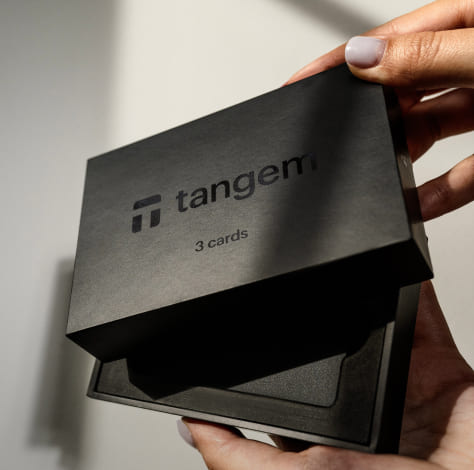
Security in digital asset management is vital, especially when it comes to cold storage solutions. Time-lock mechanisms add an innovative layer of delayed access, ensuring that assets remain secured for predetermined periods. This feature protects against unauthorized access and helps deter impulsive decisions during market fluctuations. By allowing set access times, users can achieve greater peace of mind knowing their assets are safe yet accessible at the right moment.
Key Takeaways:
- Cold storage time-lock mechanisms enhance security by preventing immediate access to assets after a predetermined time period.
- These features mitigate risks from hacks or unauthorized access while allowing a recovery process in case of loss.
- Time-locks can be integrated with multi-signature protocols for added layers of protection and user control.
Overview of Cold Storage Mechanisms
While traditional security measures focus on protecting digital assets during transfers and transactions, cold storage mechanisms provide a robust solution for long-term asset preservation. These methods keep assets offline, significantly reducing the risk of hacking and unauthorized access.
Definition and Purpose
For many investors and institutions, cold storage represents a strategic approach to securing digital currencies or sensitive data. The fundamental purpose is to safeguard assets from cyber threats by eliminating online exposure.
Types of Cold Storage Solutions
Storage solutions can be categorized into several types that facilitate varying degrees of security and accessibility. Common types include:
| Hardware Wallets | Physical devices designed to store private keys securely. |
| Paper Wallets | Printed documents containing private keys and QR codes. |
| Air-gapped Devices | Computers that are never connected to the internet. |
| Cryptographic Storage Devices | Encrypted drives that securely store data offline. |
| Cold Storage Vaults | Physical locations offering high-security safekeeping. |
This diversity in cold storage options allows users to choose a system that best fits their individual security needs.
Indeed, each type of cold storage solution has its advantages and disadvantages, influencing user preference based on security protocols and ease of use. Hardware wallets, for example, provide a portable and user-friendly option, while paper wallets are often seen as the most secure method when generated correctly. Other options, like air-gapped devices, add another layer of protection by preventing any connection to the internet.
| Cost | Varies from free to high-end solutions. |
| Security | Higher security often involves more setup complexity. |
| Usability | Some solutions may be harder to use for novices. |
| Accessibility | Considerations of how quickly assets can be retrieved. |
| Risk Exposure | Offline storage dramatically lowers risk exposure. |
This awareness enables users to make informed decisions about their chosen methods of security.
Time-Lock Mechanisms
Concept and Functionality
There’s an increasing interest in time-lock mechanisms as a method to enhance security for cold storage solutions. These mechanisms allow users to set a predetermined period during which access to their assets is restricted, effectively creating a protective barrier against unauthorized access or impulsive decisions. By building in a time-delay for transactions, users can gain peace of mind knowing that their funds are locked away and safe, making it more difficult for malicious actors to take advantage.
Across various sectors, these mechanisms can serve multiple purposes, from creating a barrier for users who might otherwise act hastily to protecting funds during market volatility. Time-locks can also facilitate trust in custodian services, as they can prove that withdrawals are not only gated by operational barriers but also by time-based restrictions that add another layer of security.
Implementation Strategies
Implementation involves choosing the right framework and technology that supports time-lock features efficiently. Various cryptographic algorithms can be utilized to ensure that the time locks are tamper-proof and reliable. Additionally, smart contracts on blockchain platforms can be programmed to enforce these locks, making them transparent and verifiable.
With a solid implementation strategy, organizations can integrate time-lock mechanisms into their existing infrastructure. This may include utilizing decentralized applications (dApps) that inherently support time delays, or customizing existing wallets to harness this functionality. By doing so, companies can significantly enhance their security protocols while providing users with greater control over their assets, mitigating risks such as theft or quick sell-offs in unfavorable conditions.
Delayed Access Security Features
For organizations seeking robust security measures, delayed access security features provide an effective way to protect sensitive information and assets. These mechanisms ensure that access to valuable data or funds is not immediately available, significantly reducing risks associated with unauthorized access. By implementing time-lock mechanisms, entities can establish a controlled environment where only authorized actions can be performed after a predetermined waiting period, thus enhancing overall security.
Delayed access introduces an additional layer of protection by allowing individuals ample time to rethink their decisions before executing transactions or operations. This delay can act as a deterrent against impulsive or harmful actions, giving stakeholders an opportunity to conduct further reviews or consultations. Moreover, the anticipation created by this mechanism can help prevent hasty mistakes that could lead to financial loss or reputational damage.
Benefits of Delayed Access
Delayed access mechanisms provide substantial benefits, particularly in safeguarding sensitive information or assets. By enforcing a waiting period, organizations can reduce the likelihood of fraud and cyberattacks. This mechanism allows time for additional verification steps to be implemented, enhancing the security of high-stakes transactions. Moreover, organizations can establish layered revocation processes, minimizing the impact of potential unauthorized access.
Another benefit includes improved compliance with regulatory requirements; many industries mandate protocols for secure data handling. Implementing delayed access can demonstrate diligence in protecting sensitive information while ensuring adherence to industry standards. Furthermore, organizations employing these mechanisms can foster a culture of security awareness among employees, enhancing overall security consciousness within the workplace.
Potential Drawbacks
Security features like delayed access are not without their challenges. The primary drawback is the potential for operational inefficiencies that may arise due to the waiting period imposed on critical transactions, especially in fast-paced environments where immediate action is required. This feature can frustrate users who need quick access to funds or information, leading to possible user attrition or dissatisfaction.
For instance, in urgent situations, the inability to act swiftly can hinder business operations or lead to missed opportunities. Additionally, the delay could be exploited by malicious actors who are aware of the mechanisms in place, using the time to strategize or execute secondary attacks. This creates a paradoxical situation where the security feature intended to protect may inadvertently create vulnerabilities.
Use Cases of Time-Lock Mechanisms
Not all security measures provide the same level of protection, particularly in fields where financial assets are at stake. Time-lock mechanisms serve as a robust solution for managing access to cryptocurrency and other digital assets, ensuring that funds remain secure during specified periods. This feature is vital in preventing premature withdrawal or fraud, adding an imperative layer of trust amidst rising threats in the cryptocurrency landscape.
Cryptocurrency Storage
Among the various applications of time-lock mechanisms, cryptocurrency storage stands out as a key use case. Investors often set time-locks on their wallets to enable long-term storage of assets without the temptation of immediate access, thus encouraging disciplined investment strategies. By establishing a predetermined release date for their funds, users can mitigate the risk of impulsive trading driven by market volatility.
Corporate Data Protection
Behind the scenes of many organizations, time-lock mechanisms enhance security protocols for sensitive corporate data. These features allow companies to safeguard critical information, enabling only scheduled access to particular data assets. This approach mitigates risks associated with insider threats and potential data breaches, ensuring that even during a security incident, unauthorized entities are prevented from accessing sensitive materials.
Even in high-stakes environments, companies adopting time-lock mechanisms benefit from enhanced operational integrity and data security. This proactive measure impacts overall corporate governance by creating structured access to critical information, reducing the likelihood of devastating data leaks or losses. Organizations can prioritize accountability and efficiency, knowing that access protocols are in place to protect against malicious insider activity or external hacking attempts.
Regulatory and Compliance Considerations
Keep in mind that cold storage time-lock mechanisms often intersect with various regulatory and compliance frameworks. Organizations must navigate laws concerning data protection, financial regulations, and other industry-specific guidelines. This can lead to legal headaches if not adequately addressed, especially in sectors like finance, healthcare, and data management where strict compliance is necessary to avoid hefty fines and reputational damage.
Legal Implications
Before implementing cold storage time-lock mechanisms, it is important to evaluate the legal implications involved. Different jurisdictions may have varying laws regarding asset custody, digital rights, and data privacy that can impact how these mechanisms are structured. Failure to comply can result in serious legal repercussions, including litigation and penalties.
Industry Standards
Regulatory bodies have established specific industry standards that organizations must adhere to when deploying time-lock mechanisms. These standards often focus on ensuring the integrity, security, and auditability of data storage solutions. Non-compliance can not only invite legal challenges but also undermine the trust and confidence customers place in the firm’s ability to protect their assets effectively.
At the same time, meeting these industry standards presents opportunities for businesses to enhance their security posture. By aligning with established frameworks, organizations can demonstrate their commitment to best practices in asset management and data integrity. This can also improve their competitive advantage by building trust with clients and stakeholders, thereby fostering a more secure and compliant operational environment.
Future Trends in Cold Storage Security
After significant advancements in security technologies, future trends in cold storage security are expected to revolve around enhanced encryption methods and multi-layered access controls. These innovations will likely integrate biometric authentication and AI-driven anomaly detection to mitigate unauthorized access. Strengthening digital cryptographic protocols will also be necessary to safeguard sensitive data, ensuring that access can be tightly monitored and controlled over time.
After exploring integration with decentralized finance (DeFi) solutions, institutions may adopt cold storage security featuring automated recovery mechanisms in case of system failures or breaches. This will promote operational resilience while ensuring that users retain absolute control over their assets, even in adverse situations. Moreover, regulatory compliance needs will shape security innovations, with a focus on adhering to industry standards and frameworks for data protection.
Technological Innovations
Around the globe, the development of advanced cold storage solutions is set to incorporate blockchain technology, which offers transparent and secure tracking of asset ownership. These innovations may also enhance the auditability of actions taken on the stored data, ensuring that all transactions remain verifiable and tamper-proof. Furthermore, the integration of IoT devices into cold storage infrastructures will facilitate proactive monitoring and real-time alerts to potential security breaches.
Evolving Threat Landscape
Before anticipating future threats, it’s important to acknowledge that cybercriminals are continuously improving their tactics to exploit vulnerabilities within cold storage systems. The emergence of quantum computing poses a significant risk, as it can potentially crack existing encryption protocols, making data stored in traditional cold storage less secure. Additionally, the rise of ransomware attacks targeting high-value digital assets highlights the necessity for stronger security measures.
Threat actors are increasingly using sophisticated social engineering techniques to gain access to sensitive information, including phishing scams tailored specifically to target cold storage users. This evolving threat landscape necessitates that organizations remain vigilant and proactive by deploying adaptive security policies and continuously updating their defenses to counter new attack vectors. Investing in education and training for personnel to recognize and respond to threats is equally critical in enhancing overall security posture.
Final Words
Presently, cold storage time-lock mechanisms represent a significant advancement in delayed access security features. By implementing these systems, individuals and organizations can mitigate the risks associated with immediate access to their assets. The ability to set specific time frames for access enhances security and encourages responsible management of valuable digital resources.
Moreover, these mechanisms not only protect against unauthorized access but also provide users with a structured approach to asset management. As the digital landscape continues to evolve, the integration of time-lock features will likely become increasingly important, fostering a balance between accessibility and robust security measures for sensitive information.
FAQ
Q: What are Cold Storage Time-Lock Mechanisms?
A: Cold Storage Time-Lock Mechanisms are security features designed to restrict access to digital assets within a specified timeframe. This ensures that even if unauthorized access occurs, the assets cannot be retrieved until the designated time has elapsed.
Q: How do Time-Lock Mechanisms enhance security?
A: Time-Lock Mechanisms enhance security by adding an additional layer of protection. They prevent immediate access to assets after a breach, ensuring attackers cannot easily liquidate or manipulate the stored value. This delay allows for mitigation measures or recovery actions to be implemented.
Q: Can Time-Lock Mechanisms be adjusted after setup?
A: Once set, Time-Lock Mechanisms typically cannot be altered without going through a preset process. This ensures that the security feature remains effective and adheres to the intended delay, safeguarding assets from premature access.







